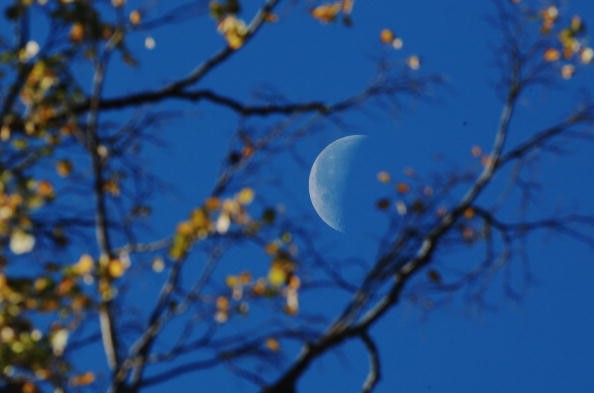Why Blue Moon Is Not Just About The Moon’s Color
| Staff Reporter | | Jul 30, 2015 10:46 AM EDT |
(Photo : Getty Images/Matt Cardy) This Friday, something rare is about to happen that you’ll find yourself uttering, “One in a blue moon.” And indeed, a phenomenon that’s literally about a blue moon is going to happen.
This Friday, something rare is about to happen that you'll find yourself uttering, "One in a blue moon." And indeed, a phenomenon that's literally about a blue moon is going to happen.
The Christian Science Monitor has learned the reason why the blue moon is considered very rare. Apparently, the Earth typically has 12 full moons in a year, one for each month. When the Earth experiences 13 full moons however, the extra full moon display is considered the blue moon.
Like Us on Facebook
So how does this happen? Experts say the full moon to full moon cycle averages 29.53 days except of course for February. The extra days that are not counted in the cycle, technically called synodic month, accumulate over the years and this is when 13 full moons are recorded in some occasions.
Nevertheless, since there isn't an extra month, blue moon refers to the second full moon in a month, as per Irish Examiner.
The last time the Earth experienced a blue moon was three years ago, specifically on Aug. 31, 2012. According to the calculations of experts, the next blue moon is bound to happen three years from now, so it's going to happen on Jan. 31, 2018.
The greatest misconception about the blue moon phenomenon though is the color of the celestial body. Instead of seeing a literally blue moon, the one that will appear in the night sky is a silvery grey moon.
While this may not be a spectacular view, you should be thankful that you are not seeing a blue moon from where you are standing. Based on expert observation the only time you will see a literally blue moon is when you are near a volcano that's spitting ash at nighttime. This is very evident in 1883 when the Indonesian volcano Krakatoa erupted and spewed ash into the atmosphere that gave the atmosphere a bluish tinge event at night.
Interestingly, the most recent time when a real blue moon graced the sky was back in Sept. 1950, when ash and smoke from an Alberta, Canada forest fire formed into a patch of clouds that seemingly gave the moon a distinct blue hue when viewed from the Royal Observatory, according to CNN.
©2015 Chinatopix All rights reserved. Do not reproduce without permission
EDITOR'S PICKS
-

Did the Trump administration just announce plans for a trade war with ‘hostile’ China and Russia?
-

US Senate passes Taiwan travel bill slammed by China
-

As Yan Sihong’s family grieves, here are other Chinese students who went missing abroad. Some have never been found
-

Beijing blasts Western critics who ‘smear China’ with the term sharp power
-

China Envoy Seeks to Defuse Tensions With U.S. as a Trade War Brews
-

Singapore's Deputy PM Provides Bitcoin Vote of Confidence Amid China's Blanket Bans
-

China warns investors over risks in overseas virtual currency trading
-

Chinese government most trustworthy: survey
-

Kashima Antlers On Course For Back-To-Back Titles
MOST POPULAR
LATEST NEWS
Zhou Yongkang: China's Former Security Chief Sentenced to Life in Prison

China's former Chief of the Ministry of Public Security, Zhou Yongkang, has been given a life sentence after he was found guilty of abusing his office, bribery and deliberately ... Full Article
TRENDING STORY

China Pork Prices Expected to Stabilize As The Supplies Recover

Elephone P9000 Smartphone is now on Sale on Amazon India

There's a Big Chance Cliffhangers Won't Still Be Resolved When Grey's Anatomy Season 13 Returns

Supreme Court Ruled on Samsung vs Apple Dispute for Patent Infringement

Microsoft Surface Pro 5 Rumors and Release Date: What is the Latest?










